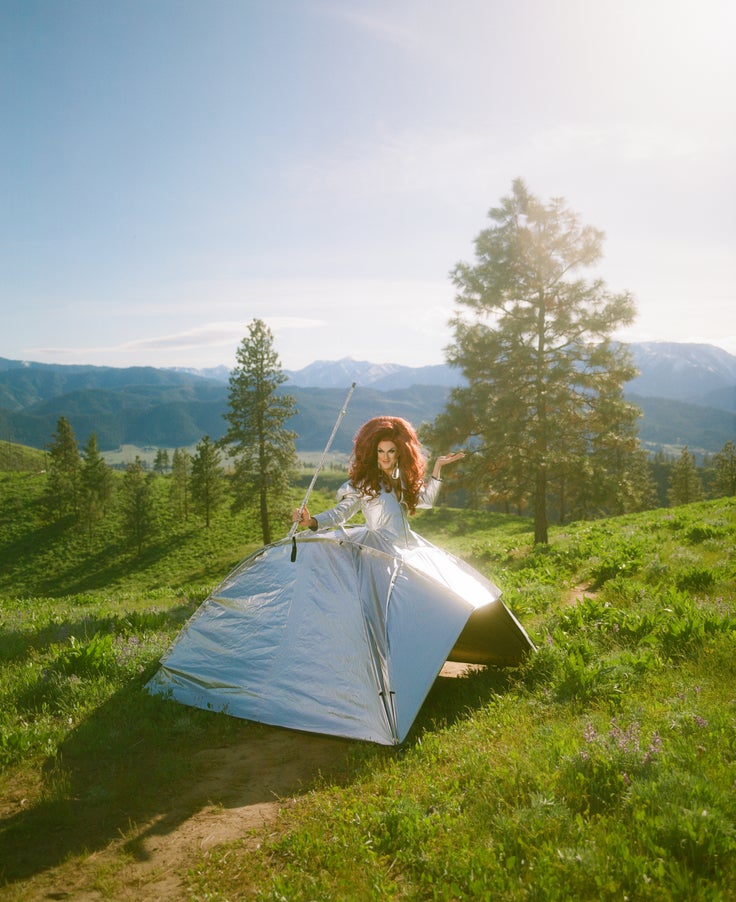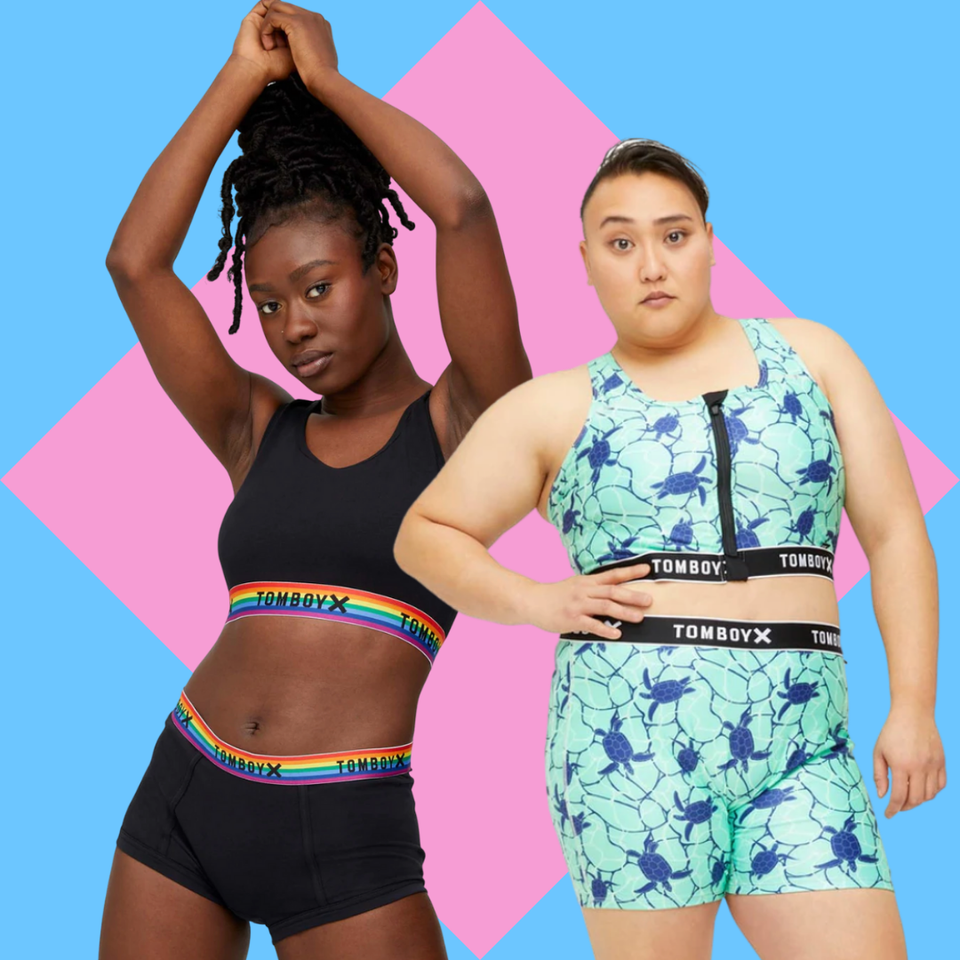Every autumn, the male satin bowerbird forages both the forests and suburbs of Australia in search of the color blue — berries, discarded bottle caps, plastic straws — and arranges his finds around a pile of sticks. When a female visits him, the male hops around her flamboyantly in a mating ritual, screeching and showing off his kaleidoscopic hues.
This is just one of the species that Pattie Gonia, a drag queen who first became famous for hiking up the Rocky Mountains in 6-inch heels, brings up when I ask her what nature and drag queens have in common. “Just look at all of the gay birds that are always popping off with song and dance performances,” she tells me. “Queerness shows up everywhere in every single kingdom on planet Earth.”
When I think of what an environmentalist looks like, someone like Pattie Gonia — with her full face of makeup, teased wig and declarations of queerness — doesn’t register. Environmentalists are supposed to look like Greta Thunberg and their work is supposed to resemble raising their voice at powerful white men until they care about vanishing ice caps.
But Pattie Gonia frolics in fields in elaborate dresses made of camping tents while educating her followers about the nuances and importance of recycling. Her brand of environmentalism, which is mostly devoid of evangelizing, is clearly resonating. She has more than 609,000 followers across Instagram and TikTok and recently had the opportunity to partner with The North Face in a multi-city Summer of Pride event series that included taking queer people on hikes in an effort to connect the community to nature.
Even the most open-minded person might ask, how does a drag queen, a person typically endemic to big coastal cities, find themself in the mountains of Colorado? Like many queer origin stories, Pattie’s began with a moment of defiance. In a previous life, she walked the Earth full time as Wyn Wiley, a photographer from Nebraska. Four years ago, Wiley attended a photography conference and was invited to a party that encouraged attendees to dress however they liked; they decided to attend as Ginger Snap, a redheaded drag queen with black platform heels.
The photos from that party made it back to Wiley’s hometown, and in the weeks that followed, friends silently walked out of their life during what they describe as a “very sad time.” Wiley decided to combine the freedom they found in the outdoors with a newfound sense of rebellion and took the shoes they’d worn as Ginger Snap to the Colorado mountains as a final “fuck you” to everyone and everything that had hurt her. They posted it on social media and woke up to several million views and hundreds of messages from gay people saying it was the first time they had seen anyone so visibly queer out in nature. “I never thought the intersection of queerness and the outdoors would be possible,” they tell me. And so Pattie Gonia was born.

Midway through our conversation, I realized that I am Pattie Gonia’s target audience: a gay person whose idea of nature is the grassy median that separates two sides of a highway. I moved to New York as soon as I turned 18 because the city represented safety while the countryside and suburbs I grew up in harbored the possibility of homophobia at every turn. As a visibly queer person, nature didn’t represent serenity; it was an unwelcoming place where I had to hide who I was.
Pattie encouraged me to challenge deeply rooted ideas of where gay people are “supposed” to exist. “What I find often is that people go to cities to find that queer community, but it’s often limited to bars, drug culture, alcohol; and people are projecting their own trauma on each other and are often repeating harmful patterns,” she tells me. “Nature for our mental health is one of the most healing things that anyone can do.” Among other things, studies have shown that being in nature significantly reduces stress, improves overall mood and reduces the risk of developing depression.
Pattie does acknowledge the reality that the outdoors is not always a safe place for queer or trans people. It’s the reason she never gets into drag when she is alone or why she goes with groups of other queer people to turn the trail into a big, gay party. Still, “nine times out of 10,” she reassures me, people she runs into in nature respond to her presence with more joy and curiosity than hostility.
But does her activism reflect an open-mindedness in the larger fight against climate change, or do people just gravitate to Pattie because a hiking drag queen feels like a novelty? Pattie genuinely thinks that the tide is changing in environmentalism and that marginalized communities, specifically people of color and queer people, are finally being listened to. She attributes organizations like Queer Nature as the reason she can do more intersectional work and tells me that straight and white environmentalists are realizing that in order to survive, the movement will have to be as diverse as nature itself: “In a meadow, having a lot of different species leads to its survival,” she says. I hope her vision for the future comes true.
The inclusion of queer people in the climate movement seems like a big step forward, but hearing Pattie talk makes it seem like it’s the only logical step. She made me think about all the ways in which our existence is affirmed in the natural world. Besides the satin bowerbird, she pointed out a fish species that goes through several sex changes throughout its life and sea creatures that change their appearance to look like the opposite gender. “So many animals put on drag everyday,” she says.
The more I think about it, the more profound that revelation becomes. It makes me confront all the erroneous ideas that have made me feel separate from nature: that people like us don’t exist there or that a quiet life in the woods is reserved for straight men who look like lumberjacks. When I let go of those ideas, the world suddenly feels bigger. Queerness is not a concept invented by liberals or a mode of existence confined by geography. According to Pattie Gonia, it is precisely what nature intends us to be.


